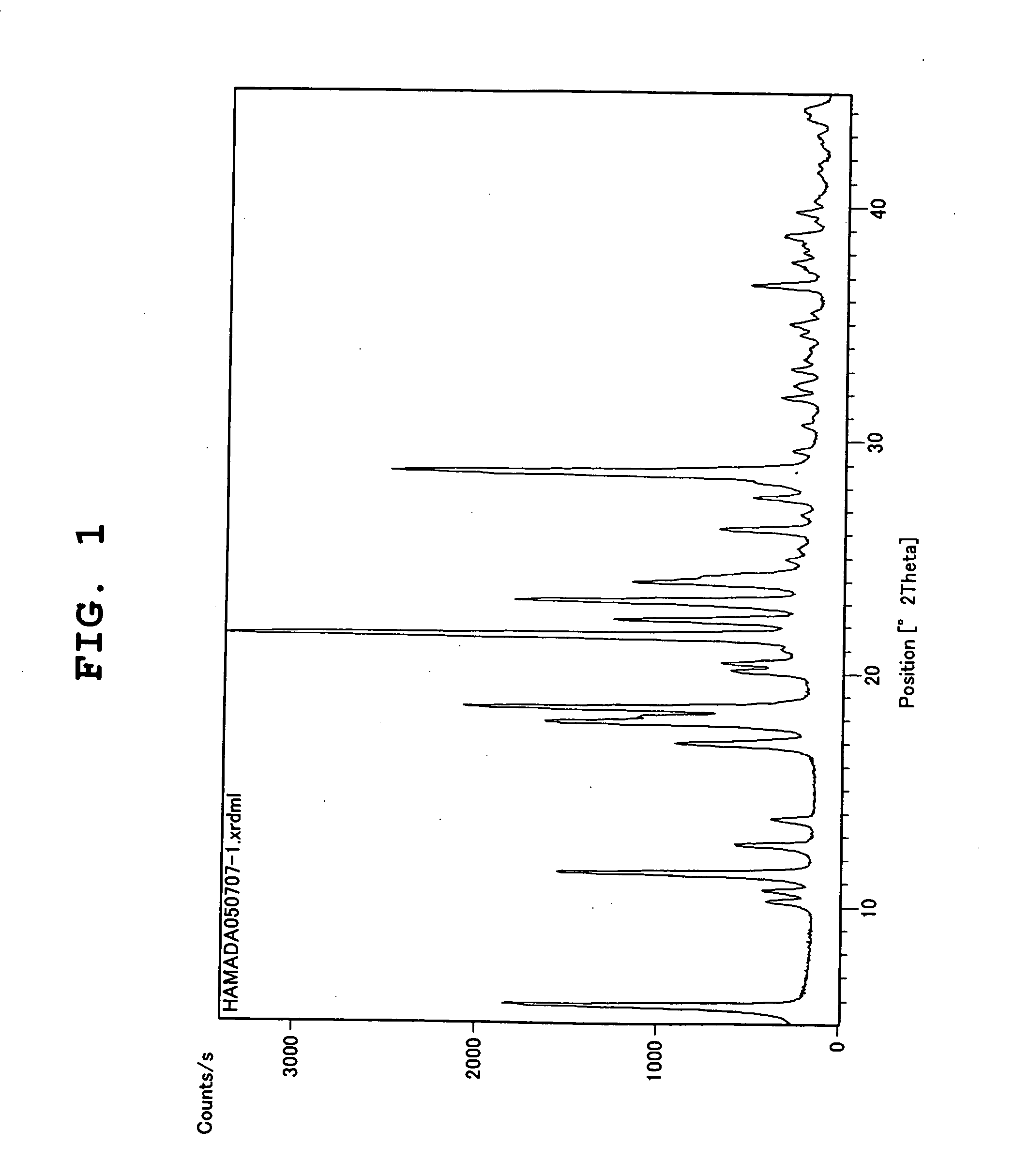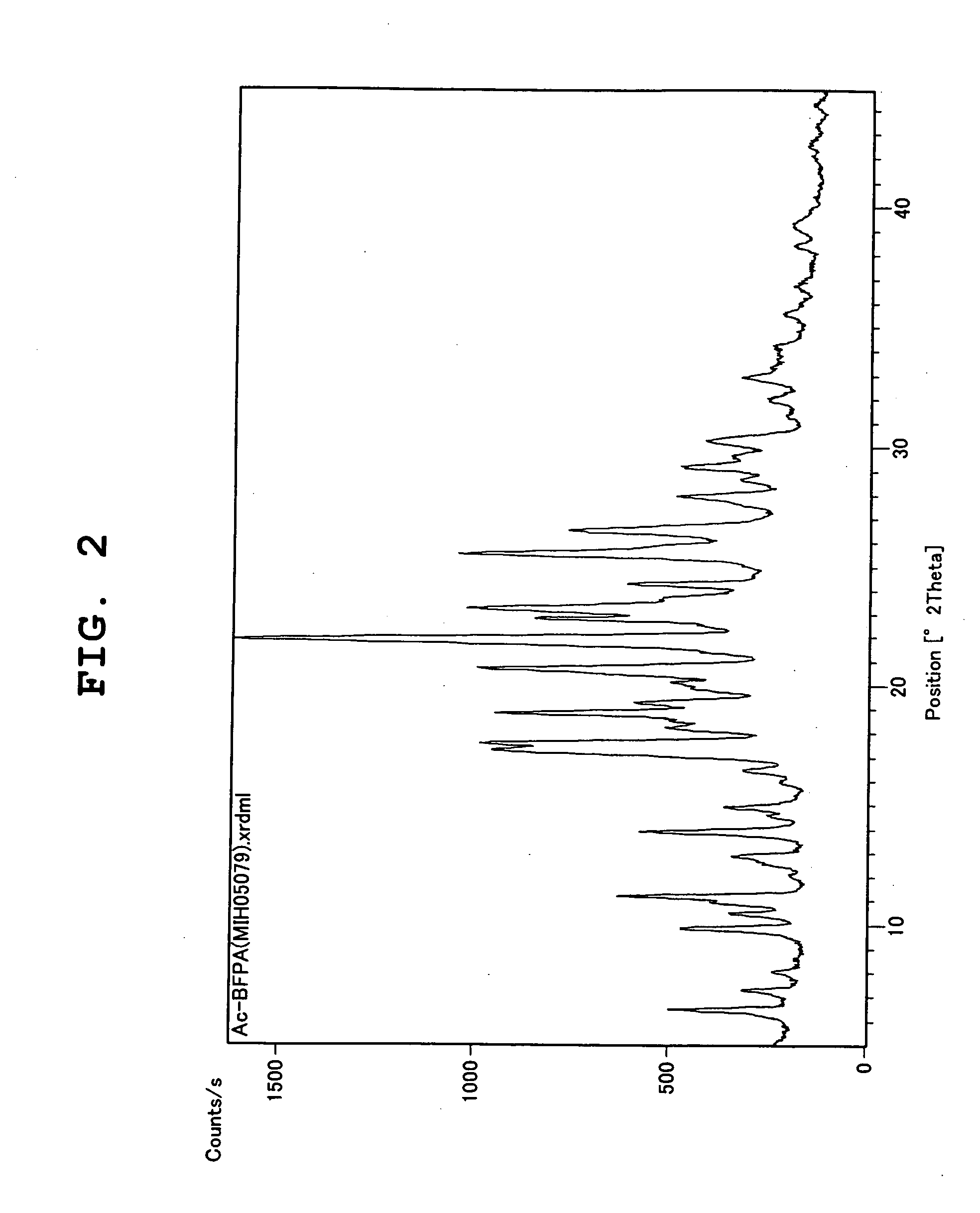Production method of optically active diphenylalanine compounds
- Summary
- Abstract
- Description
- Claims
- Application Information
AI Technical Summary
Benefits of technology
Problems solved by technology
Method used
Image
Examples
example 1
Synthesis of 2-acetylamino-3,3-diphenylpropanoic acid
[0083] To a solution (1.25 M) of diethyl acetamidomalonate (6.79 g, 31.25 mmol) in N-methyl-2-pyrrolidone (25 mL) was added 60% sodium hydride (1.25 g, 31.25 mmol), and the mixture was stirred at room temperature for 1 hr. Diphenylmethylene chloride (4.45 mL, 25.0 mmol) and potassium iodide (4.15 g, 25 mmol) were added, and the mixture was stirred at 50° C. for 7 hrs. After completion of the reaction, toluene (75 mL) and water (31.5 mL) were added to the reaction mixture, and the mixture was partitioned. The organic layer was washed twice with water (31.5 mL) and concentrated. Ethanol (31.5 mL) and 2M aqueous sodium hydroxide solution (37.5 mL) were added to the concentrated solution, and the mixture was stirred at 80° C. for 11 hrs and allowed to cool to 25° C. Toluene (9 mL) was added and the mixture was partitioned. The aqueous layer was concentrated to a half volume and adjusted to pH 1.1 with concentrated hydrochloric acid, ...
example 2
Synthesis of 2-amino-3,3-diphenylpropanoic acid hydrochloride
[0084] A solution (21 mL) of 2-acetylamino-3,3-diphenylpropanoic acid (2.83 g, 10 mmol) in concentrated hydrochloric acid was stirred at 90° C. for 5 hrs, and the reaction mixture was cooled in an ice bath to allow solid precipitation. The solid was collected by filtration and dried to give the title compound (2.65 g).
example 3
Synthesis of 2-phenylacetylamino-3,3-diphenylpropanoic acid
[0085] An aqueous solution (14 mL) of 2-amino-3,3-diphenylpropanoic acid hydrochloride (2.0 g, 7.2 mmol) was adjusted to pH 12 with 1M aqueous sodium hydroxide solution. Phenylacetyl chloride (1.05 mL, 7.9 mmol) was added dropwise at 0-10° C. while adjusting the mixture to pH 11-12 with 1M aqueous sodium hydroxide solution, and the mixture was stirred at room temperature for 4 hrs. Ethyl acetate (40 mL) was added to the reaction mixture, and the mixture was adjusted to pH 1.1 with concentrated hydrochloric acid and partitioned. The obtained organic layer was warmed to 50° C. and hexane (30 mL) was added. The mixture was cooled in an ice bath to allow solid precipitation. The solid was collected by filtration and dried to give the title compound (2.41 g).
[0086] melting point: 173° C.
[0087]1H NMR (400 MHz, DMSO-d6) δ 3.26-3.34 (m, 2H), 4.33 (d, 1H, J=7.2 Hz), 5.19 (dd, 2H, J=5.6 Hz, 10.7 Hz), 6.88-7.34 (m, 15H), 8.51 (d, 1H...
PUM
| Property | Measurement | Unit |
|---|---|---|
| Angle | aaaaa | aaaaa |
| Angle | aaaaa | aaaaa |
| Angle | aaaaa | aaaaa |
Abstract
Description
Claims
Application Information
 Login to View More
Login to View More - R&D
- Intellectual Property
- Life Sciences
- Materials
- Tech Scout
- Unparalleled Data Quality
- Higher Quality Content
- 60% Fewer Hallucinations
Browse by: Latest US Patents, China's latest patents, Technical Efficacy Thesaurus, Application Domain, Technology Topic, Popular Technical Reports.
© 2025 PatSnap. All rights reserved.Legal|Privacy policy|Modern Slavery Act Transparency Statement|Sitemap|About US| Contact US: help@patsnap.com



